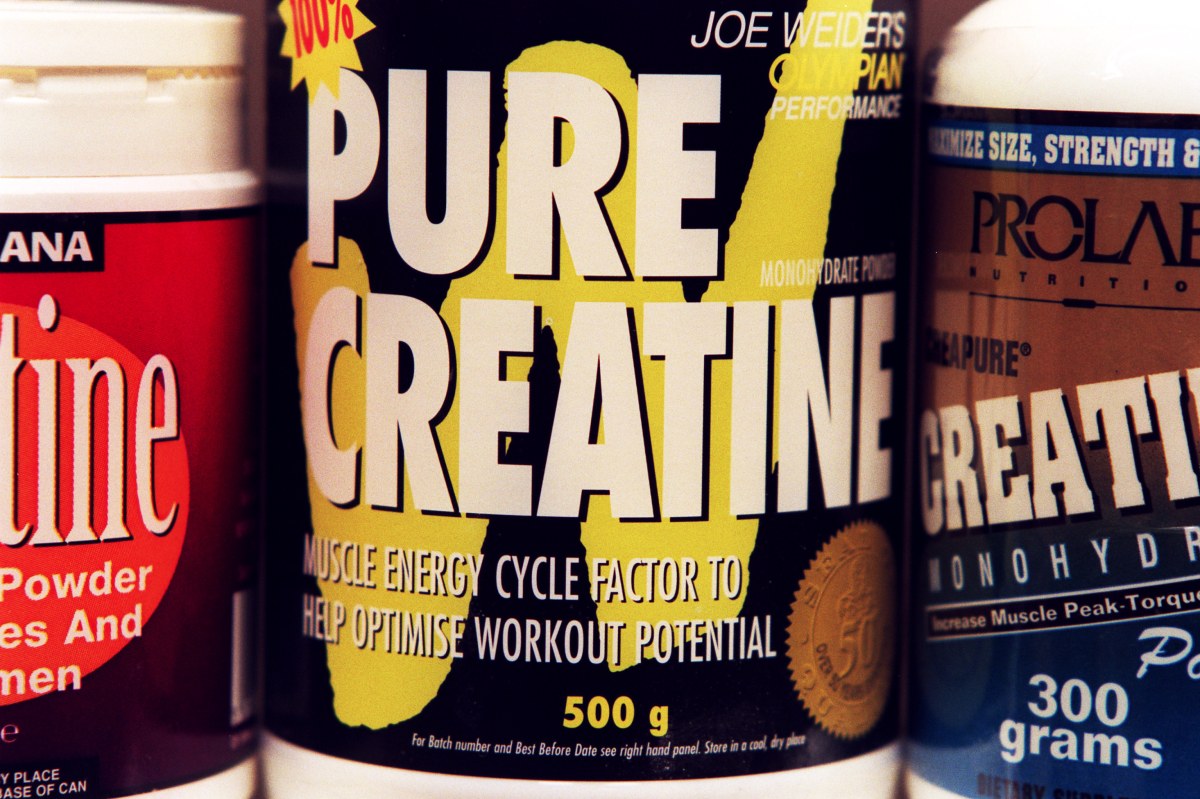Creatine sales are booming. For years, the supplement was largely misunderstood by the public — if not outright maligned — because of its association with what we’ll call swole-chasers. But recent studies have indicated that the compound, a naturally-occurring amino acid, does more than just redirect water to the biceps. In an ironic twist, it may even have a hand in improving cognitive function. Creatine influences “brain bioenergetics,” which is a fancy way of saying that it has the potential to enhance memory and reduce mental fatigue.
If that suddenly makes you want to get your hands on creatine, and a lot of it, there are some basic tenets of creatine supplementation you should know. That applies to first-time or returning creatine users in the strength training sphere. In general, less is more. But at the outset with this particular compound, is more actually more? We explain.
Calisthenics Are Back. This YouTuber Is Leading the Renaissance.
We caught up with Tariq Otuemhobe, aka STRIQfit, the man who makes the most notorious strength-training moves look simpleWhy Creatine?
For starters: an elementary explanation of how creatine works.
Whatever form you choose to take it in (powder, gummy, it makes no difference), steady supplementation ensures that the phosphocreatine stores in your brain don’t run too low, which in turn helps the body adequately produce adenosine triphosphate (ATP), a molecule that some have dubbed “the body’s energy currency.” This sets off a chain of fun reactions: more water to the muscles, more proteins, more anabolic hormones swimming around the bloodstream. More more more. From there, you’re able to enhance exercise performance — specifically heavy weight lifting and high-intensity activities like sprinting. (And perhaps your brain function, too.)
With those potential benefits on the line, wouldn’t it be advisable to just chug a ton of creatine each day? Not necessarily.
How to Reach “Creatine Saturation”
Creatine saturation is the point at which you reach maximum muscle stores of phosphocreatine. Once your creatine stores are saturated, any additional creatine you consume won’t be stored and will actually be excreted in your urine. Considering creatine supplements aren’t cheap, you’d literally be pissing away money. Not to mention, you’d run the risk of increased water retention (which could lead to unwanted weight gain and disrupted kidney function), along with other fun side effects like stomach cramps, nausea and diarrhea.
Instead, when you begin your creatine experimentation, follow the tried-and-true approach of (a) a five- to seven-day loading phase at 10 grams per serving, followed by (b) a maintenance phase, in perpetuity, of three to five grams per serving. You don’t have to start with an aggressive initial week, but it’ll help you shore up your phosphocreatine stores quicker and allow you to zoom straight to that maintenance period (which would otherwise take three to four weeks). Once there, settle into an easy, low-key routine of three to five grams per day for the most benefits and the least side effects.
Will I Know If It’s Working?
Creatine responses can vary widely, but look for tell-tale signs in whatever strength and conditioning program you’re following. If you’re able lift heavier weights, log more reps or sprint faster, this could be a sign that creatine is working. You might also register quicker recovery (on account of the ATP production) and/or “cell swelling,” the water-assisted growth in muscle size that made creatine so attractive to lifters in the first place.
Don’t hold your breath on sudden mental wizardry — this isn’t the drug from Limitless, and more studies are needed. But if you’re regularly engaging in the sort of exercise that best aligns with creatine in the first place (high-intensity resistance training), that habit should give you a brain boost, regardless.
Whether you’re looking to get into shape, or just get out of a funk, The Charge has got you covered. Sign up for our new wellness newsletter today.



















